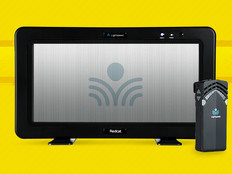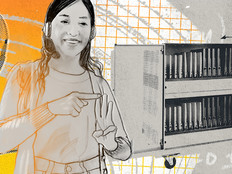Checking Out the E-Library
To "e-" or not to e- – that is the collection-development question today's school librarians are facing. As the former head librarian for the Hackley School, an independent K-12 school in Tarrytown, N.Y., I wrestled with it too.
Over the past few years especially, the scope of the resources I can choose to make available to students has increased exponentially. The way they conduct research also has changed radically from how I was comfortable doing it when I was a teenager. Back then, the microfilm and microfiche copies of periodicals and The New York Times were considered modern technologies. Today's students, by comparison, have access to databases, e-books, blogs, Twitter feeds and more. Collection development takes on a whole new dimension, given these advances.
One of the biggest challenges for any school "going e-" is to convince users that the newer resources are just as good and just as valuable as the print ones they've grown to love. When a 2007 fire destroyed the Hackley Libraries collection, our librarians decided to increase the school's digital offerings rather than repurchase many of the print references that we previously had on the shelves. Yes, there was some discomfort over that decision – even among the librarians. But once teachers understood that, rather than one student at a time using the Twayne's Authors Series on J.D. Salinger, all the students studying Salinger could access the information at will, they embraced the change.
Since then, the librarians at Hackley – like those at many schools – have been having the conversation about just how e- to be. So far, its digital offerings aren't for recreational reading. And that's a shame, because I saw many students who have their own e-readers borrowing print books and, if they like them, purchasing an e-copy.
The E-Equation
E-books are probably already in your school's library if your librarian is buying databases from publishers such as ABC-CLIO and Salem Press, or resources from the Gale Virtual Reference Library catalog or Oxford Reference Online.
Using a service such as Capstone Interactive Library, FolletShelf, OverDrive or EBSCO's NetLibrary, rather than a dedicated reader, is by far the easiest way to go e-. The only IT support that members of the school community need is a password for accessing these services' "bookshelves" so they can download their choices to a personal computing device. Although Capstone only offers electronic versions of its own publications, OverDrive, Follet and EBSCO have deals with publishers to provide a wider array of titles.
Using dedicated e-readers in schools is slightly more complicated. Questions to address vary by school size and budget. If your school has Title I status, for example, what happens if a student receiving free or reduced-price lunches loses or damages an e-reader? Does the student's family pay for a replacement or repair, or does the school district?
Another consideration is which department will pay for the readers. Should the IT department be responsible – e-readers are technology devices, after all – or should the library cover the cost of the devices because they are used for reading books?
And then there's the issue of age appropriateness: Should a school have different devices for different grades? After all, what's appropriate for fifth-graders might not interest students in eighth grade, and vice versa.
When considering an e-reader deployment, school librarians, teachers, IT staff and administrators also must review their acceptable-use policies to see if revisions are needed and make decisions about device sharing and maintenance issues. For instance, will you allow students to borrow school-owned readers for personal use, or will students only be allowed to use them on school grounds? How often will you update or replace the devices? Who decides which model is best: the librarians or the IT staff?
In today's fast-changing learning environment, making careful decisions about platform, delivery methods and user expectations will ultimately be the most beneficial way to move forward.
Riddle Me This
The way an e-book appears to the reader may differ depending on which device is being used, so think carefully before committing to a platform. For example, the print version of Decoded, a memoir written by musician and entrepreneur Jay-Z, includes rap lyrics and images that don't appear in all of its digital counterparts. What's more, only one of the versions includes embedded video clips.
Laura Pearle is the former head librarian for the Hackley School in Tarrytown, N.Y.






